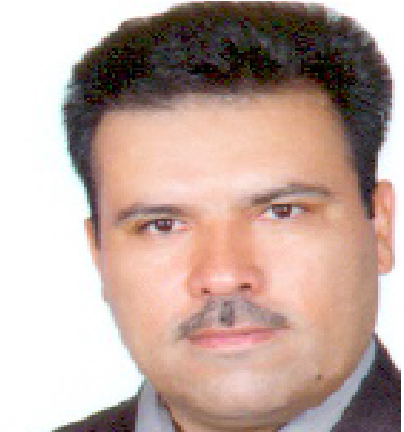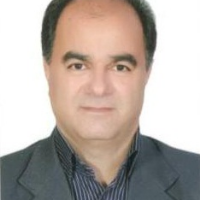Cultural-Social Regeneration of Urban Peripheral Textures with the Empowering Local Community Approach; Case Study, Neishabur City
urban peripheral development, due to the profit-seeking motives of property owners and its economic justification for urban management, has caused the abandonment of many parts of the inner cities and out of the development cycle. On the other hand, it is always added to the concentrated spots of the population and the size of the cities, in the low-value lands around and apart from the urban system. Informal settlements, as a product of growth in urban peripheral areas, are mainly located in the vicinity of big cities, which have disorganized traffic and physical structures, and consist of residential units that are built without observing the technical principles of building and lack official permits. The latest approach in this field is urban regeneration, which seeks to change the nature of a place using the intervention of residents and other stakeholders. Regeneration has different classifications, One of these classifications, is community-oriented regeneration and it is defined based on the intervention of the local community in the regeneration process. As a important historical city, Neyshabur is not immune from the problem of urban peripheral development and inefficiency of the structures formed in these areas. The existence of its marginal structure is a proof of the inefficiency of urban development management. In this texture, due to the arrival of immigrants from other parts of the city as well as from rural areas, we see heterogeneity in the cultural and social characteristics of the residents. The dominance of such conditions on the tissues makes it mandatory to take serious measures to recreate and strengthen its cultural and social aspects. In this regard, it is necessary to identify the existing capabilities of the people of the urban peripheral settlements of Neishabur, and provide strategies for empowerment and solving the challenges in these textures. Therefore, the main question of the research is; what is the current cultural-social situation of the urban peripheral area of Neishabur and what are the priority strategies for its cultural-social stabilization with the view of empowering the local community?According to its purpose, the current research is practical and its method is a combination of descriptive-analytical methods according to the nature of the research and the investigated components and the approach governing the research. Collecting the required data and information has been done through documentary and field method (observation and questionnaire). The formal validity method was used to determine the validity of the research tool (questionnaire) and Cronbach's alpha coefficient was used to measure the reliability of the questionnaire. After collecting the information needed for the research, the current situation has been analyzed and evaluated using the SWOT technique, and by applying the opinions of subject matter experts, weighting and ranking strategies in accordance with internal and external factors, the SWOT matrix, It has been done and the best and priority intervention strategies in the context have been determined based on the importance and total weighted ranking. Also, in order to identify the priority strategies of regeneration, the ACCEPT method and the opinions of subject experts are used. The ACCEPT method uses six criteria to prioritize strategic goals and provide an opportunity for the strategic planning team to evaluate the consequences of adopting a strategy from different aspects. Therefore, the final strategies for cultural-social regeneration of the urban peripheral spaces of Neyshabur with the empowerment approach have been determined. Living conditions in urban peripheral neighborhoods indicate the compulsion and inevitability of people to live in these neighborhoods. The lack of services and urban infrastructures and the needs of daily life, or the transformation of quiet rural environments into crowded and unplanned urban environments, causes the satisfaction of living in these settlements to be always low. Access to administrative and commercial centers in the city and other urban services is facing problems. This causes the residents of these neighborhoods to be dissatisfied with the existing conditions and have low satisfaction from living in these neighborhoods. Also, according to the opinions of the municipal experts, in the parts where we see the villages connected to the city, there is relatively good participation, but in the rest of the settlements, the participation rate is moderate and decreasing.As the results show, the priority of the obtained social-cultural strategies of the urban peripheral texture of Neishabur, according to the total attractiveness scores, is as follows:1. Education and encouragement to education and learning and raising the level of social skills of the residents2. Providing programs for families and young people's free time3. Promoting cultural and artistic activities and supporting related projects in this field.In this research, cultural-social regeneration strategies of the urban peripheral texture of Neyshabur were investigated and studied with the approach of empowering the local community. According to the results obtained from the research, it is necessary to include the following solutions in the agenda of managers and officials of urban regeneration:1. The urban peripheral texture of Neishabor is full of unique opportunities that distinguish it from other cities in the province. The history of culture, literature and art, the existing cultural centers and the historical history of the city provide unique opportunities to the The urban peripheral texture, which must be taken into account in cultural-social regeneration.2. The desire to modernize the residential texture, the possibility of creating local institutions whose role has been weak so far, and the existence of cooperative tendencies and human resources in the urban peripheral texture of Neishabur, is among the things that should be considered in the preparation, formulation, implementation and implementation of plans. Regeneration, especially in its cultural-social dimensions, should be given more attention.3. Neyshabor has a unique historical record that focusing on cultural and social issues as a catalyst and guiding the path of regeneration can be a suitable strategy for Neyshabor, therefore focusing on the tourism capacities of this city, branding different neighborhoods, central events and ... it can provide attractiveness and suitable economic trends for the city, which will also help in the regeneration of urban peripheral neighborhoods.
-
Investigating the Viability of Cities Located in Environmentally Sensitive Areas, Case Study: Zabol City
*, Seyed Mehdi Moosa Kazemi, Fatemeh Karimian Pour
Journal of Urban Ecology Researches, -
Urban tourism development strategies with a cultural-historical approach ( Case Study:Gilan province)
Seyyed Mehdi Moussakazemi *, Mohammadtaghi Rahmani, Seyed Ali Hosseini, Behnaz Pourkhodadad
Geography, -
Investigating the role of RFID technology in urban make smart with a focus on toll payment in urban highways (Case study of Mashhad-Baghcheh highway)
Hosein Rahimi *, NARGES Golestani, Fateme Vahidi
Journal of Geography and Planning, -
Comparative Analysis of Physical Regeneration Strategies in Dysfunctional Textures of Neishabur City
Seyyed Mehdi Moussakazemi *, , , Narges Sadat Razavi
Journal of Physical Development Planning,



